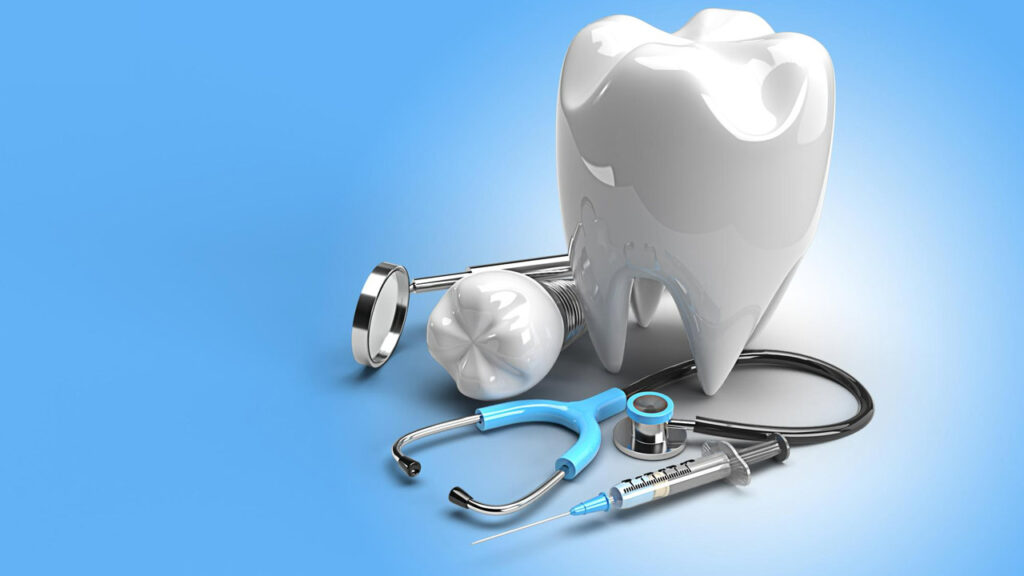Dental insurance is an important aspect of overall health and well-being. Regular dental visits and preventative care can help catch and prevent dental issues before they become more serious and costly. Dental insurance can also help make dental care more affordable for individuals and families.
Navigating the world of dental insurance can be confusing and overwhelming. Different types of dental insurance plans, terms, and payment options can make it difficult to understand what is covered and how much you will be responsible for paying. In this blog, we will explore different types of dental insurance, understand key terms and how to choose the right dental insurance plan, and explore payment options for dental services.
Types of Dental Insurance

A. Traditional Dental Insurance
Traditional dental insurance is the most common type of dental insurance. These plans typically cover preventative care such as routine cleanings and check-ups, as well as basic and major dental services. These plans may also have a network of providers that individuals must use to receive coverage.
B. Dental Health Maintenance Organizations (DHMOs)
Dental health maintenance organizations (DHMOs) are a type of dental insurance plan that typically have lower monthly premiums but require individuals to choose from a network of providers. These plans may also have lower out-of-pocket costs for certain services, but may not cover as many procedures as traditional dental insurance plans.
C. Discount Dental Plans
Discount dental plans are not insurance, but rather membership program that provides discounts on dental services. These plans typically have a lower cost than traditional dental insurance, but do not cover all dental procedures and may not have a network of providers.
D. Government-Funded Dental Insurance
Government-funded dental insurance includes programs such as Medicaid and Medicare. These programs typically have income and eligibility requirements and may have limited coverage for dental services.
Understanding Dental Insurance Terms
A. Premiums
Premiums are the monthly or annual cost of a dental insurance plan. These costs can vary depending on the type of plan, the individual or family’s coverage level, and other factors.
B. Deductibles
A deductible is an amount an individual or family must pay out-of-pocket before their dental insurance plan begins to cover costs. Some plans may have a yearly deductible, while others may have a per-visit deductible.
C. Coinsurance
Coinsurance is the amount an individual or family is responsible for paying after their dental insurance plan has paid its portion of the cost. This amount can vary depending on the type of plan and the service being provided.
D. Maximums
Maximums are the maximum amount a dental insurance plan will pay out in a year or over the lifetime of the plan. Once this maximum is reached, the individual or family will be responsible for paying all additional costs.
E. Waiting Periods
Waiting periods are the amount of time an individual must wait before certain services are covered under their dental insurance plan. These waiting periods can vary depending on the type of plan and the service being provided.
How to Choose the Right Dental Insurance Plan
A. Consider your Dental Needs
When choosing a dental insurance plan, it is important to consider your current and future dental needs. This includes the types of services you may need, how often you typically visit the dentist, and any pre-existing conditions.
B. Compare Plan Options and Costs
Before choosing a dental insurance plan, it is important to compare plan options and costs to ensure that you are getting the best coverage for your needs and budget. This includes looking at the monthly premium, deductible, coinsurance, maximums, and waiting periods for each plan. It is also important to consider any network restrictions and exclusions for certain procedures or providers.
C. Check for Network Providers
Many dental insurance plans have a network of providers that individuals must use to receive coverage. It is important to check if your preferred dentist is in the network before choosing a plan. If they are not, you may have to pay higher out-of-pocket costs or switch to a different provider.
D. Consider the Plan’s Exclusions and Limitations
Each dental insurance plan has exclusions and limitations on what is covered. It is important to read the fine print and understand what is not covered under the plan. This can include certain procedures, pre-existing conditions, or maximums on coverage.
Payment Options for Dental Services
A. Insurance-Based Payment
Insurance-based payment is when an individual pays for dental services using their dental insurance plan. This includes paying the monthly premium, deductible, and coinsurance as outlined in the plan.
B. Self-Pay Options
Self-pay options are when an individual pays for dental services out-of-pocket without the use of insurance. This can include paying for services directly or using a payment plan with the dentist.
C. Dental Financing
Dental financing is when an individual takes out a loan to pay for dental services. This can include personal loans or financing options through the dentist’s office.
D. Dental Savings Plans
Dental savings plans are not insurance, but rather membership program that provides discounts on dental services. These plans typically have a lower cost than traditional dental insurance and may be a good option for individuals without insurance or with limited coverage.
healthcareDental health is an important aspect of overall health and well-being. Take control of your dental health with our top-quality dental health care products. Say goodbye to painful and inconvenient dental issues and hello to a brighter, healthier smile.
These products are designed with the latest technology and are made from premium materials, ensuring that you get the best results. Whether you’re looking for a solution for sensitive teeth, gum health, or just want to keep your smile sparkling, our dental health care products have got you covered.
Tired of hiding your smile due to yellowing, stained, or sensitive teeth?
ProDentim is here to help. This advanced formula whitens and strengthens your teeth, while also reducing sensitivity and promoting oral health. Say goodbye to expensive and painful dental treatments, and start enjoying a bright, confident smile with ProDentim.
Click Here to Try ProDentim now and see the results for yourself!
Struggling with tooth sensitivity, gum problems or bad breath?
Dentitox Pro is the solution you need. This natural, effective formula helps to clean and strengthen your teeth and gums, giving you a brighter, healthier smile. Dentitox Pro is made with the finest ingredients and is free from harmful chemicals, making it safe and gentle for everyday use. Say goodbye to pain and embarrassment, and start enjoying a confident, beautiful smile with Dentitox Pro.
Click Here to Order now and get 20% off your first purchase!
Click Here for Professional Teeth Whitening
FAQ About the Understanding of Dental Insurance and Payment Options
A. What is the difference between traditional dental insurance and a DHMO?
Traditional dental insurance typically covers a wider range of procedures and services, and may not have as many network restrictions as a DHMO. DHMOs typically have lower monthly premiums and out-of-pocket costs, but may not cover as many procedures and may require individuals to choose from a network of providers.
B. How do I know if a dental insurance plan is right for me?
To determine if a dental insurance plan is right for you, it is important to consider your current and future dental needs, compare plan options and costs and check for network providers. It is also important to understand the plan’s exclusions and limitations and consider if it fits your budget.
C. What are some self-pay options for dental services?
Some self-pay options for dental services include paying for services directly, using a payment plan with the dentist, or taking out a personal loan.
D. What are dental savings plans and are they worth it?
Dental savings plans are membership programs that provide discounts on dental services. These plans can be a good option for individuals without insurance or with limited coverage, but it is important to compare the costs and discounts to traditional dental insurance to determine if it is worth it.
E. What should I do if I can’t afford dental insurance?
If you cannot afford dental insurance, there are options such as government-funded programs, self-pay options, or dental savings plans. It is also important to look into community health clinics or other low-cost options for dental care.
In conclusion, understanding dental insurance and payment options is crucial for ensuring that you have access to affordable and comprehensive dental care. There are various types of dental insurance plans, including traditional insurance, DHMOs, and dental savings plans, each with its benefits and drawbacks.
It is important to consider your current and future dental needs, compare plan options and costs and check for network providers before choosing a plan. Additionally, self-pay options and dental financing are also available for those without insurance or with limited coverage. If you are unable to afford dental insurance, there are government-funded programs, community health clinics and other low-cost options available. It is important to explore all options and make an informed decision about your dental coverage.

